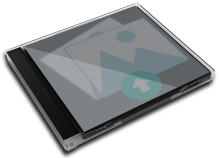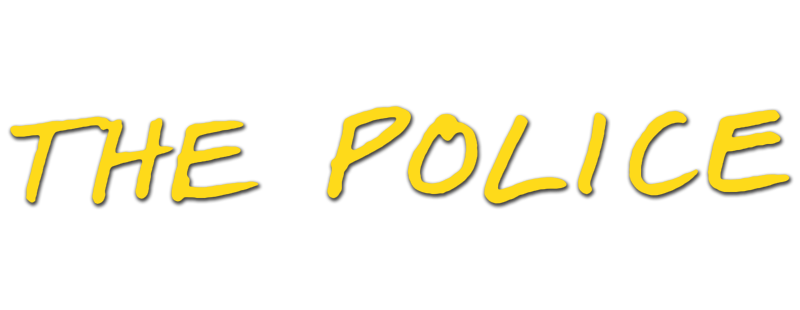
Cover NOT yet available in
Join up for 4K upload/download access
Your Rating (Click a star below)
![]()
![]()
![]()
![]()
![]()
![]()
![]()
![]()
![]()
![]()
Track List
01) Spirits in the Material World

02) Every Little Thing She Does Is Magic
03) Invisible Sun
04) Hungry for You (j'aurais toujours faim de to
05) Demolition Man
06) Too Much Information
07) Rehumanize Yourself
08) One World (Not Three)
09) Omegaman
10) Secret Journey
11) Darkness
01) Spirits in the Material World
02) Every Little Thing She Does Is Magic
03) Invisible Sun
04) Hungry for You (j'aurais toujours faim de to
05) Demolition Man
06) Too Much Information
07) Rehumanize Yourself
08) One World (Not Three)
09) Omegaman
10) Secret Journey
11) Darkness
2:59
4:20
3:44
2:52
5:57
3:42
3:10
4:46
2:47
3:33
3:13
Data Complete 70%
Total Rating
Total Rating
![]() (1 users)
(1 users)
Back Cover![]()
CD Art
3D Case
3D Thumb
3D Flat
3D Face
3D Spine
First Released
![]() 1981
1981
![]() New Wave
New Wave
![]() Relaxed
Relaxed
![]() Rock/Pop
Rock/Pop
![]() ---
---
![]() Medium
Medium
![]() Album
Album
![]() 0 copies
0 copies
Album Description
Available in:




Ghost in the Machine is the fourth album by The Police, released in 1981. Much of the material in this album was inspired by Arthur Koestler's The Ghost in the Machine, which also provided the title. It was their first album to bear an English language title. The group released three successful singles from the album: "Every Little Thing She Does Is Magic", "Invisible Sun", and "Spirits in the Material World". It went multi-platinum in the United States. The album was listed #322 on Rolling Stone's 500 Greatest Albums of All Time.
The cover art for Ghost in the Machine features a seven-segment display-inspired graphic that depicts the heads of the three band members each with a distinctive hair style (from left to right, Andy Summers, Sting with spiky hair, and Stewart Copeland with a fringe); the band was unable to decide on a photograph to use for the cover. Wire bonds can be seen on the original issue vinyl album cover, suggesting that the display is custom rather than merely seven-segment or perhaps is a photographic collage. The album's cover is ranked at number 45 on VH1's 50 Greatest Album Covers. The graphic was designed by Mick Haggerty.
The album was the first Police record to feature heavy use of keyboards and horns. "Spirits in the Material World" has a rhythmic string synthesizer part, "Every Little Thing She Does Is Magic" uses piano arpeggios and "Invisible Sun" has a background of synthesizer chords. The following twenty minutes of the record, "Hungry for You (J'aurais Toujours Faim de Toi)" through "One World (Not Three)", include many saxophone harmonies while the opening to "Secret Journey" showcases the Roland Guitar Synthesizer.
Sting included all the synthesizer parts in his demos for the songs, and brought in Jean Roussel for the piano parts on "Every Little Thing She Does Is Magic". The demo for "Every Little Thing She Does Is Magic" was such a high budget recording that the group could not best it with the equipment available at AIR Studios, and ended up using it as the backing track for the official recording, with Copeland and Summers dubbing their parts on. Sting also played all the saxophone parts on the album. Andy Summers recollects:
I have to say I was getting disappointed with the musical direction around the time of Ghost in the Machine. With the horns and synth coming in, the fantastic raw-trio feel—all the really creative and dynamic stuff—was being lost. We were ending up backing a singer doing his pop songs.
The LP opens with "Spirits in the Material World," featuring keyboards dubbed over Summers' reggae-inspired guitar licks. "Every Little Thing She Does Is Magic" features piano, a strong Caribbean vibe, and an extended non-verbal vocal solo at the end. "Invisible Sun" is a contrast of slow, steady, verses, a bombastic chorus, and several guitar solos. "Hungry For You (J'Aurais Toujours Faim de Toi)" is sung mostly in French, with the bass and horns both repeating a single 8-note melody for the length of the song, while the guitar maintains a steady beat. "Demolition Man," the band's longest song, almost six minutes in length, features a strong bass line and saxophone, and was written by Sting while staying at Peter O'Toole's Irish mansion. It became a belated hit in 1993, as the theme song for the same-named action movie. Grace Jones and Sting have both recorded solo versions of the song. Manfred Mann's Earth Band also recorded a version — rearranged and with extensive use of synthesizers — in 1982 for their "Somewhere in Afrika" album.
"Too Much Information," "Rehumanize Yourself," and "One World (Not Three)" feature a heavy use of horns. Similarly to "Landlord" and "Dead End Job", Copeland had written both music and lyrics for "Rehumanize Yourself", but Sting rejected the lyrics and replaced them with ones he'd written himself. The final three songs, "Omegaman," "Secret Journey," and "Darkness" return to the darker sound which opens the album. "Omegaman" was chosen by A&M to be the first single from the album, but Sting, who had only played on the song grudgingly, refused to allow its release in single form.
In his younger days, Sting was an avid reader of Koestler. Another of the Police's albums, Synchronicity, was inspired by Koestler's The Roots of Coincidence, which mentions Carl Jung's theory of synchronicity.

User Album Review
None...
External Album Reviews
None...
User Comments


Available in:
Ghost in the Machine is the fourth album by The Police, released in 1981. Much of the material in this album was inspired by Arthur Koestler's The Ghost in the Machine, which also provided the title. It was their first album to bear an English language title. The group released three successful singles from the album: "Every Little Thing She Does Is Magic", "Invisible Sun", and "Spirits in the Material World". It went multi-platinum in the United States. The album was listed #322 on Rolling Stone's 500 Greatest Albums of All Time.
The cover art for Ghost in the Machine features a seven-segment display-inspired graphic that depicts the heads of the three band members each with a distinctive hair style (from left to right, Andy Summers, Sting with spiky hair, and Stewart Copeland with a fringe); the band was unable to decide on a photograph to use for the cover. Wire bonds can be seen on the original issue vinyl album cover, suggesting that the display is custom rather than merely seven-segment or perhaps is a photographic collage. The album's cover is ranked at number 45 on VH1's 50 Greatest Album Covers. The graphic was designed by Mick Haggerty.
The album was the first Police record to feature heavy use of keyboards and horns. "Spirits in the Material World" has a rhythmic string synthesizer part, "Every Little Thing She Does Is Magic" uses piano arpeggios and "Invisible Sun" has a background of synthesizer chords. The following twenty minutes of the record, "Hungry for You (J'aurais Toujours Faim de Toi)" through "One World (Not Three)", include many saxophone harmonies while the opening to "Secret Journey" showcases the Roland Guitar Synthesizer.
Sting included all the synthesizer parts in his demos for the songs, and brought in Jean Roussel for the piano parts on "Every Little Thing She Does Is Magic". The demo for "Every Little Thing She Does Is Magic" was such a high budget recording that the group could not best it with the equipment available at AIR Studios, and ended up using it as the backing track for the official recording, with Copeland and Summers dubbing their parts on. Sting also played all the saxophone parts on the album. Andy Summers recollects:
I have to say I was getting disappointed with the musical direction around the time of Ghost in the Machine. With the horns and synth coming in, the fantastic raw-trio feel—all the really creative and dynamic stuff—was being lost. We were ending up backing a singer doing his pop songs.
The LP opens with "Spirits in the Material World," featuring keyboards dubbed over Summers' reggae-inspired guitar licks. "Every Little Thing She Does Is Magic" features piano, a strong Caribbean vibe, and an extended non-verbal vocal solo at the end. "Invisible Sun" is a contrast of slow, steady, verses, a bombastic chorus, and several guitar solos. "Hungry For You (J'Aurais Toujours Faim de Toi)" is sung mostly in French, with the bass and horns both repeating a single 8-note melody for the length of the song, while the guitar maintains a steady beat. "Demolition Man," the band's longest song, almost six minutes in length, features a strong bass line and saxophone, and was written by Sting while staying at Peter O'Toole's Irish mansion. It became a belated hit in 1993, as the theme song for the same-named action movie. Grace Jones and Sting have both recorded solo versions of the song. Manfred Mann's Earth Band also recorded a version — rearranged and with extensive use of synthesizers — in 1982 for their "Somewhere in Afrika" album.
"Too Much Information," "Rehumanize Yourself," and "One World (Not Three)" feature a heavy use of horns. Similarly to "Landlord" and "Dead End Job", Copeland had written both music and lyrics for "Rehumanize Yourself", but Sting rejected the lyrics and replaced them with ones he'd written himself. The final three songs, "Omegaman," "Secret Journey," and "Darkness" return to the darker sound which opens the album. "Omegaman" was chosen by A&M to be the first single from the album, but Sting, who had only played on the song grudgingly, refused to allow its release in single form.
In his younger days, Sting was an avid reader of Koestler. Another of the Police's albums, Synchronicity, was inspired by Koestler's The Roots of Coincidence, which mentions Carl Jung's theory of synchronicity.
User Album Review
None...
External Album Reviews
None...
User Comments

No comments yet...

